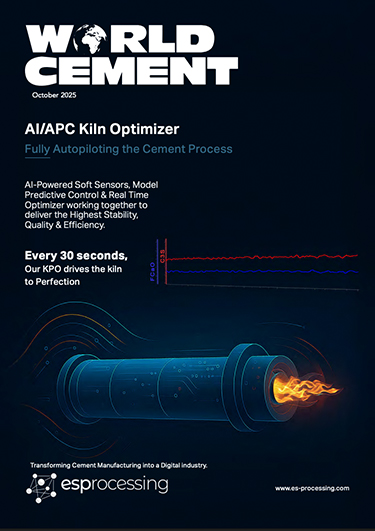Editorial comment
The cement industry’s decarbonisation process continues apace with projects ongoing around the world. On a roll after the successful launch of the Brevik CCS facility back in June, Heidelberg Materials has now reached a Final Investment Decision (FID) with the UK government to build a new CCS facility at its Padeswood plant in North Wales.
Register for free »
Get started now for absolutely FREE, no credit card required.
With the FID reached, construction of the CCS facility – the first of its kind in the UK – is due to begin this year with commissioning targeted for 2029.
In terms of capacity, Padeswood marks a step up from Brevik which is designed to capture 400 000 tpy or roughly 50% of the plant’s CO2 emissions. Padeswood, in contrast, is targeting a world first of 800 000 tpy – equivalent to the plant’s entire CO2 emissions output. Considering that some of those CO2 emissions come from biomass fuels that cannot otherwise be recycled (domestic food, wood, and paper waste, for example), there is even the possibility that cement produced at Padeswood could ultimately be CO2 negative. Similarly to Brevik, the captured CO2 will be stored offshore: after capture, the CO2 will be compressed and transported via pipeline to permanent storage under the seabed in Liverpool Bay as part of the HyNet North West project.
Energy Minister Michael Shanks was quoted as saying: “This trailblazing cement works showcases the north Wales workforce on the global stage – leading the charge in the clean industries of the future and powering Britain’s reindustrialisation through this UK-first project.” However, rather than reindustrialisation, the UK cement industry might have more reason to be thinking about deindustrialisation. The UK’s Mineral Products Association (MPA) recently raised concerns over the impact of high energy costs and competition from other markets. Dr Diana Casey, Executive Director for cement and lime at the MPA noted that whilst there is a real opportunity for low carbon growth in the UK, “this progress is under pressure from deindustrialisation. High UK industrial electricity prices and competition from countries where carbon or environmental pressures are lower mean that imports are making up a greater share of the UK market. The UK is effectively offshoring its emissions, as emissions associated with imported goods consumed here are not recorded in UK territorial CO2 data.”
To combat these potentially existential threats, the MPA has called for more action to support demand for lower-carbon products as well as the implementation of a “watertight Carbon Border Adjustment Mechanism.”
All of this goes to show that decarbonising the cement industry is not just a technical problem – in fact, projects like Brevik and Padeswood are showing that the technology already exists. Rather, successfully decarbonising the industry will take the active engagement of every stakeholder, from producers, to government and policymakers, to end-users, and the general public.
Why not take part in the decarbonisation discussion at EnviroTech? Join us on 15 – 18 March to share your own insights and hear from leaders in the cement industry.
Registration is now open: www.worldcement.com/envirotech


